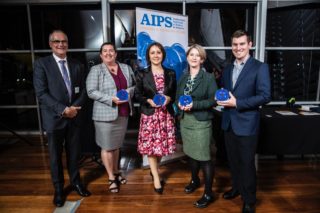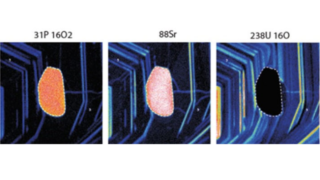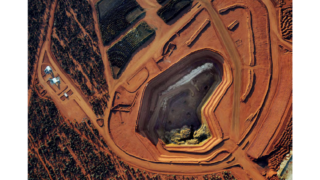News Archive 2020
New Discovery Grants for TIGeR researchers announced
Posted 19 November 2020
Announced last week, TIGeR has been spectacularly successful in the latest round of Australian Research Council Discovery Grants, with four grants awarded to TIGeR-led teams totalling $1.7M. The Discovery Scheme supports fundamental research for the benefit of society and the knowledge-based economy.
Professor Gretchen Benedix will lead a team utilizing innovative machine learning techniques to interrogate high resolution images of the surface of Mars and thereby generate detailed geological maps automatically. Coupled with chronological data, these maps will be used to aid in accurately reconstructing Mars’ planetary history.
Associate Professor Katy Evans will lead an investigation into the geochemical mobility of the platinum-group elements rhenium and osmium when rocks become hydrated. The aim is to create new tools for identifying the former existence of water reservoirs on planetary bodies and to aid in interpretation of Re-Os isotope data.
Professor Zheng-Xiang Li and collaborators will study variations in the intensity of the Earth’s magnetic field through the middle period of its history, to elucidate how the Earth’s liquid outer core, from which the field is generated, has evolved in relation to global geodynamic cycles and in response to development of the solid inner core.
Professor Steven Reddy will lead a project using emerging nano-technologies to investigate the nature of mineral interfaces in the Earth’s mantle which are critical in determining larger scale rock properties and controlling fundamental Earth processes such as plate tectonics and melting in the Earth’s interior.
Young Tall Poppy Science Award to TIGeR researcher Dr Raffaella Demichelis
Posted 12 October 2020
For the second year in a row a TIGeR member has won a prestigious Young Tall Poppy Science Award. An initiative of the Australian Institute of Policy and Science, these awards recognise exceptional young researchers who are also passionately committed to science communication. This year’s TIGeR awardee is computational chemist and ARC Future Fellow Dr Raffaella Demichelis.
Dr Demichelis and her team in TIGeR use supercomputing to predict properties and chemical reactivity of minerals in diverse systems. She has led landmark research that proves a new and more comprehensive theory explaining how minerals form, and has solved problems related to how atoms arrange into certain mineral structures. Harnessing and mimicking the rich chemistry observed in nature offers insights into, among other things, the mechanics of carbon dioxide sequestration and coral reef preservation, how kidney stones and bones form, and how to control scale formation in industry. Dr Demichelis has also contributed to develop software used worldwide, and spreads her enthusiasm for science through engaging with outreach and community building activities. She co-initiated networks in WA aimed to teach software skills to PhD students and volunteers much of her time to visit schools and mentor kids to possible STEM career paths.

Distinct formation histories of the Earth’s deep mantle domains
Posted 31 August 2020
Published in Nature Geoscience last month by Luc Doucet et al., members of our Earth Dynamics group have presented compelling geochemical evidence to suggest that the Earth’s deep mantle is divided into two distinctive, long-lived domains centred on the Pacific Ocean and African continent, respectively. Characterised by low seismic shear wave velocities and sampled periodically by deep-seated plumes leading to surface hot-spot volcanism, the two domains have distinct geochemical signatures, with the African domain showing relative enrichment from subducted continental lithosphere associated with the formation and breakup of the Pangaea supercontinent.
Read more or listen to Luc’s seminar on this topic here.
State-of-the-art SIMS instrument to replace old workhorse SHRIMP
Posted 13 August 2020
Announced last week, the Western Australian State Government has provided the necessary balance of funding to enable Curtin University to acquire a new high-resolution ion microprobe. Replacing one of our 25-year old SHRIMPs in the John de Laeter Centre, the new instrument will facilitate both ongoing and exciting new geochemical research projects by TIGeR and allied research groups at Curtin. SIMS instruments (Secondary Ion Mass Spectrometers) are capable of quantitative isotope analysis and imaging of mineral grains down to the sub-micron scale.

TIGeR leads new Critical Minerals initiative on Rare Earth Elements
Posted 22 July 2020
TIGeR researchers are taking the lead on a new collaborative project at Curtin investigating aspects of Australia’s supply and production of Rare Earth Elements (REE). Individual Rare Earth metals and their compounds are critical, as in vital, to modern technologies such as computer components, powerful magnets, batteries and electric vehicles.
This initiative assembles a team of geochemists, microbiologists, chemical and metallurgical engineers, molecular modellers and sustainability experts across three Curtin campuses to work collaboratively on innovative solutions to a range of issues affecting Australia’s supply chain for REE. Five TIGeR researchers are involved – Pete Kinny, Katy Evans, Elizabeth Watkin, Julian Gale and Chris Kirkland, out of a team of thirteen. Our work will include life-cycle analysis, dating and geochemical fingerprinting of REE ores, optimisation of REE-bearing phosphate mineral beneficiation by flotation, cleaner microbial-enhanced metal extraction processes and efficient hydrometallurgical recovery.
The project was made possible by an internal Cross-Faculty, Cross-Campus funding scheme, and is part of a broader Critical Minerals research focus at Curtin that includes leadership in both the Future Battery Industries and the Reliable Affordable Clean Energy (RACE) for 2030 Collaborative Research Centres.

